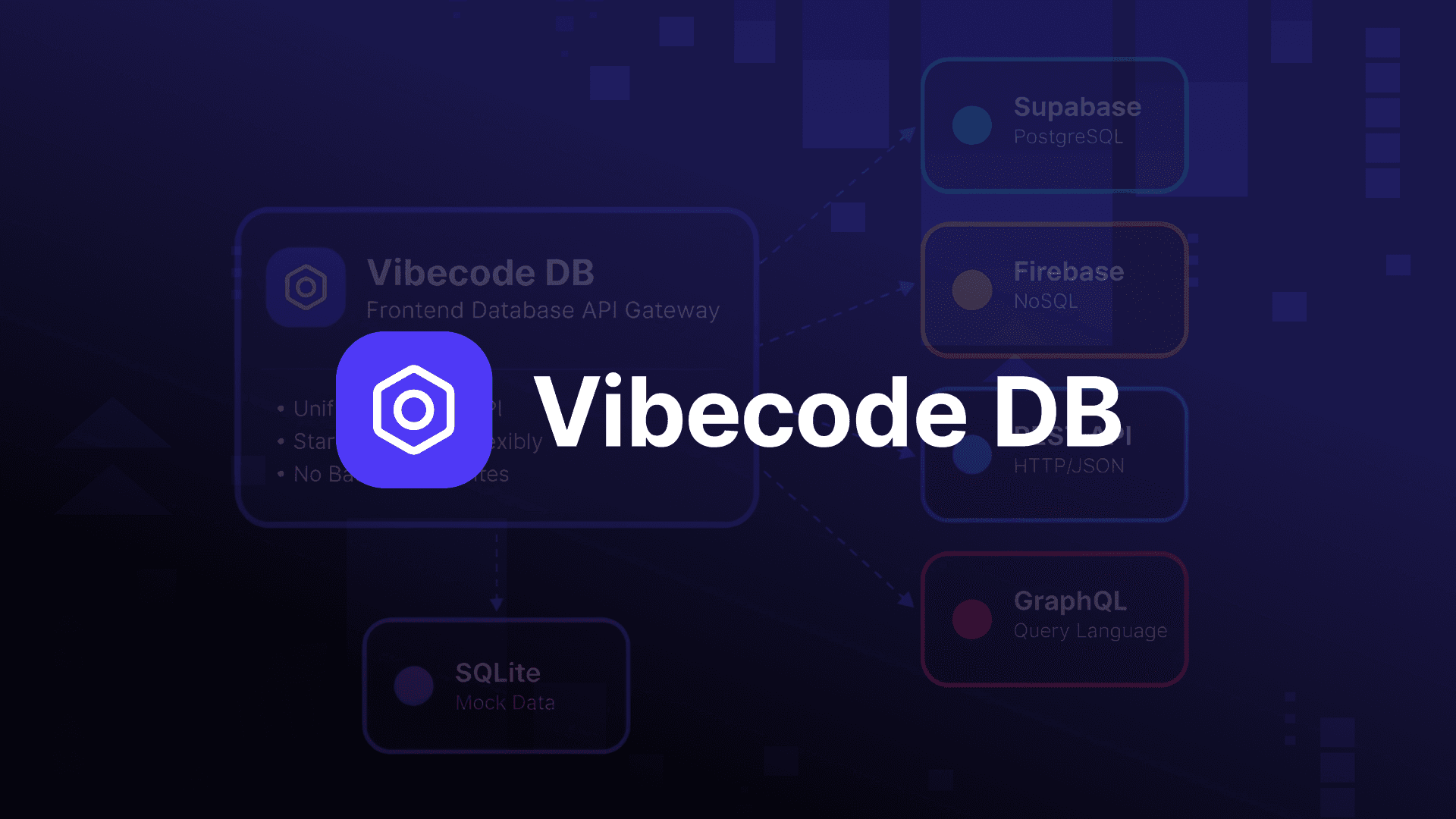Table of Contents
GitHub Stars Won’t Give You Rent
Author

Date

Book a call

Editor’s Note: This recap from thegeekconf features Kitsie as he shares his journey through the challenges of open-source projects and startups, highlighting the importance of charging for your work and navigating the complexities of tech entrepreneurship.
Hi, everyone! I’m Kitsie, also known as The Kitsie on Twitter. Just to start off, that QR code from a while ago? Yeah, it’s probably dead, or it’ll lead you to some shady site. Don’t worry, though, you can find me on Twitter—that’s the safest option. I’m originally from Macedonia, but I now live in Poland. And honestly, I’ve stopped using fancy titles to describe what I do. These days, I just call myself a rectangle mover. I mean, come on, as developers, what do we really do? We take some JSON and paint rectangles on screens, and there you have it.
Let’s Simplify Things—Developers, We Just Move Rectangles!
A while back, I started questioning if I have ADHD. So, I did the logical thing—Googled "ADHD test." And here’s the kicker: I bailed halfway through the test. That pretty much answered my question. I’m constantly working on too many things, forgetting half of them. Oh, by the way, I also recently became a father—my most important project yet! But wait, there’s more. I also launched a rap reaction channel. Yeah, because clearly, with everything else going on, I thought reacting to rap songs was the next logical step. I’m like a golden retriever with ideas—I see something shiny, I chase it. Whether it’s worth pursuing or not? I don’t stop to think about that.
Too Many Projects? You Bet! And I Love Every Chaotic Minute of it
One of my brightest ideas, or let’s say the most successful dumb idea I’ve had, is SISI, the browser for developers. Every time I speak at a conference, I do this self-inflicted torture—I ask the audience, “Who here is using SISI?” And usually, it’s two people in the back, probably employees or ex-employees of SISI. But hey, it works for me! The real project I’ve been grinding away on for the past couple of years is Benji, an app I made for myself—a life organizer that combines literally everything. I’m talking to-do lists, calendars, Pomodoros, meal tracking, hydration, mood tracking, workouts, and about 79 other features into one app. It’s got everything you could possibly need. And yes, the mascot was generated by MidJourney, which is why it has three mouths. People make fun of it, but hey, it drives clicks. Guilty as charged.
When you Create Something for Yourself, Sometimes it Just Clicks!
Look, I know most of the speakers here are going to dive deep into technical talks. But not me. I’m going to do five quick ones and then we’ll really get started. Here goes: How to build an Electron browser from scratch using Electron, Next.js, and MobX state tree? Don’t. Your mental health will thank you. The explanation for useEffect… is still missing. Thank you for attending. What’s new and exciting in React? Nothing. Unless you’re into fake releases. Whatever. Thanks for attending. Practical use cases for Web3… none. Thank you.
Short and Sweet? More Like Short and Salty!
Let’s shift gears now. My main talk is titled GitHub Stars Won’t Pay Your Rent. This article I wrote years ago went viral on Hacker News like clockwork. Back when I wrote it, I was this wide-eyed, ambitious kid thinking we’re all going to build startups and crush it. Fast forward a few years, and the reality is a bit more… bitter. The title may be the same, but trust me, the tone has changed. I have two goals with this talk. First, I want to motivate you to start charging for your work—whether it’s an open-source project or a startup. You need to raise your prices. The second part? I’m going to discourage you from making anything. Yeah, I said it.
GitHub Stars are Great—But They Won’t Keep the Lights On
Every single thing I’ve worked on, I did it because I wanted to solve my own problem. It’s a bit stupid, I admit because you can’t always prioritize your own problems. But following this mindset has brought me some good stuff. I once wondered, "Why can’t people pay to access a closed GitHub repo?" So, I sat down over a weekend, built a solution, released it, and moved on.
When in Doubt, Just Build it Yourself

Let me take you back to 2016 when I first built something people actually noticed. I wanted a list of all the commands I could ask my Google Assistant because back then, there was no ChatGPT and Siri—let’s face it—was dumb. I spent weeks on this, tweaking the animation while people at my coworking space were asking, “Why are you wasting your time on this?” I didn’t care. I wanted it, so I made it. The result? TechCrunch noticed and featured it, and suddenly, I had followers.
Sometimes, Your Dumb Ideas Get the Spotlight—Thank You, TechCrunch

That’s how SISI started. I was freelancing and building web apps, and my client wanted everything to be perfectly responsive. I got tired of switching between devices in Chrome, so I did what any developer would do—I put a bunch of iframes on a page. That was SISI version 0.001. I tweeted it, and boom, people wanted it. Over time, SISI evolved into a full-fledged browser for developers. But it didn’t stop there.
When You’re Solving a Problem, Don’t Stop at Version 0.001
Here’s the thing—people didn’t know they needed a browser like SISI until they saw it. Problem-driven development is all about solving issues you didn’t even realize existed. At one point, I got so tired of logging in and out to test different users in my app that I added a feature where each frame has its own session. Now, you could test across multiple scenarios at once. Did people ask for it? No. But when they saw it, they realized they needed it.
Solve your Problems First—the World will Catch Up
Here’s the Shakespearean dilemma: To open-source or not to open-source? When you’ve built something great, it’s so easy to hit “publish” on GitHub and feel good about yourself. But turning something into a paid product is a lot harder. You have to deal with Stripe integration, customer portals, and logistics—it’s a giant pain. But if you really want to make money, you’ve got to take the long path.
Open-Source Is Easy. Charging for It? That’s the Real Game

For years, I was chasing this Mother Teresa goal with Benji. I thought I was going to create a life-changing app that would save people from social media addiction and fix their lives. Reality check: People don’t care. It was only when I started charging for the app that things began to change.
Want People to Value Your Work? Charge for It
Here’s a wild theory—if someone hands you a free sandwich at an airport, your first thought is, “What’s wrong with it?” You’re not going to pull out $30 to pay for it. The software works the same way. When you offer something for free, people don’t value it.
Free Software Is Like a Free Sandwich—People Are Suspicious of It
With SISI, I eventually realized that giving it away for free was a mistake. We closed the open-source repo, turned it into a paid product, and the results were mind-blowing. Sales came flooding in from places I’d never imagined, like Japan. It made me realize—there’s a whole world of people who have the same problems, and they’re willing to pay to solve them.
Surprise! People From All Over the World Will Pay for Your Work
Let’s talk about the ugly side of things—startups are hard, and the road is long. You might think it’s all fun and games until the customer emails start rolling in. I woke up one day to an email with just the subject line: “F* you, this shouldn’t be paid.”** Yeah, that’s what I wanted to see with my morning coffee.
The Reality of Startups: It’s Not All Glamor; It’s Customer Complaints at 6 A.M
Here’s the truth: 90% of the time, it’s not fun. You get hyped about launching your product, but then comes the hard part—bug fixes, customer support, and endless updates. Burnout is real. It’s why every job has a job part that sucks. The key is knowing it, expecting it, and deciding whether you’re ready for that 90%.
Dive deep into our research and insights. In our articles and blogs, we explore topics on design, how it relates to development, and impact of various trends to businesses.


